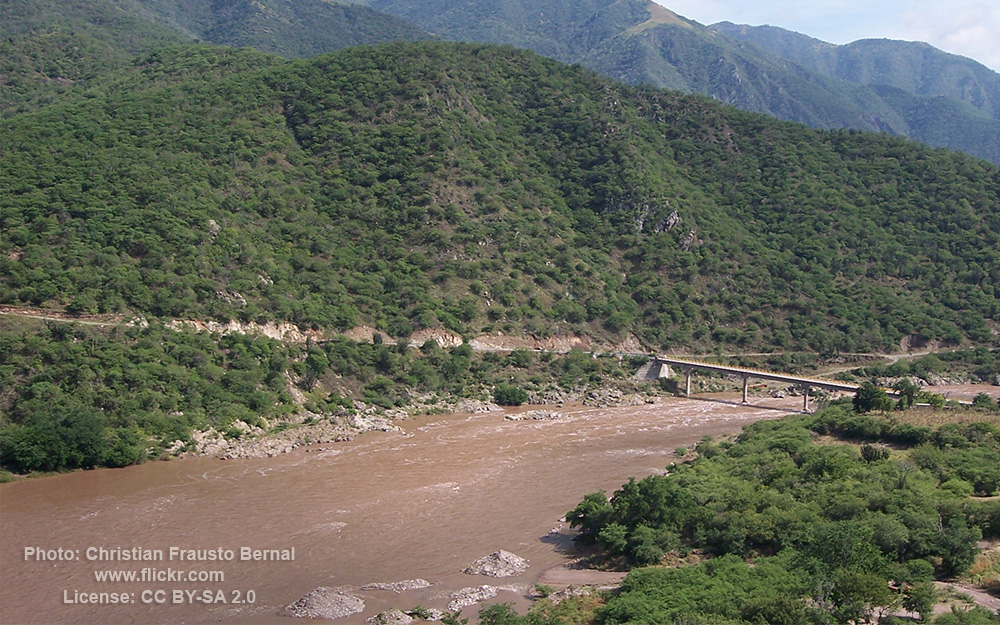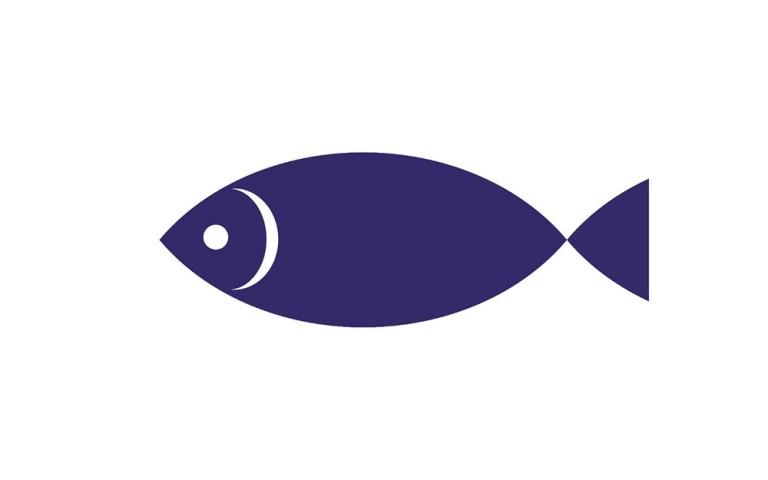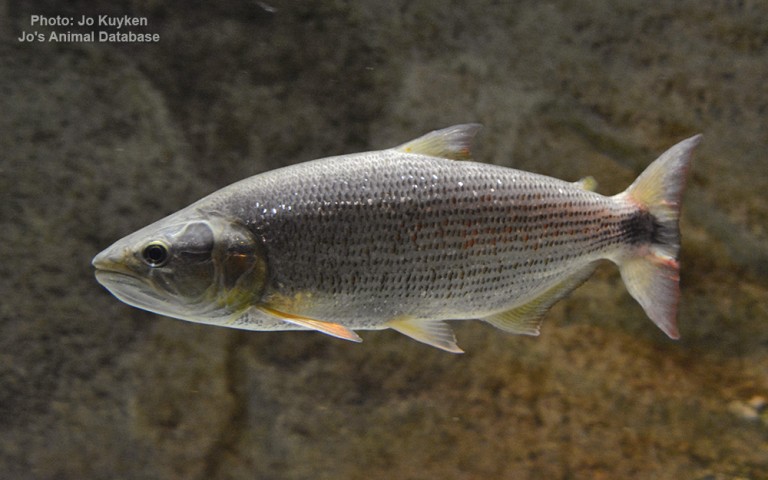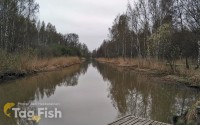Santiago River

Siluriformes - Catfishes
Cypriniformes - Carps
Characiformes - Characins
Atheriniformes - Silversides
Cyprinodontiformes - Toothcarps
Siluriformes - Catfishes
Cypriniformes - Carps
Characiformes - Characins
Atheriniformes - Silversides
Cyprinodontiformes - Toothcarps
Siluriformes - Catfishes
Cypriniformes - Carps
Characiformes - Characins
Atheriniformes - Silversides
Cyprinodontiformes - Toothcarps
The Río Grande de Santiago, or Santiago River, is a river in western Mexico. It flows westwards from Lake Chapala via Ocotlán through the states of Jalisco and Nayarit to empty into the Pacific Ocean. It is one of the longest rivers in Mexico, measuring up 433 km (269 mi) long.
The river begins at Lake Chapala, running through Ocotlán and continuing roughly north-west through the Sierra Madre Occidental range, receiving the Verde, Juchipila, Bolaños, Huaynamota, Mololoa, and other tributaries.
The Río Grande de Santiago then descends over 1700 meters as it heads towards the sea. Downstream from Lake Chapala, the river and its major tributaries have carved deep narrow canyons, or barrancas, which can be 600 meters lower than the surrounding plateau. The lower elevation and year-round moisture in the canyon bottoms sustain forests, which include many coastal tropical species not found on the plateaus. The Barranca de Oblatos or Barranca de Huentitán is a scenic and protected area popular with residents of the city of Guadalajara, which lies on the plateau immediately south of the barranca.
At La Yesca, the La Yesca Dam was completed in 2012 and the El Cajón Dam was completed downstream in 2007. Below El Cajón, the Aguamilpa Dam was completed in 1993, creating a reservoir covering a large part of the territory of the municipality of El Nayar in Nayarit.
From Aguamilpa, the river descends to the coastal lowlands, passing by Santiago Ixcuintla and empties into the Pacific Ocean, 16 km (10 mi) northwest of San Blas, in Nayarit.
The Santiago River alone is reported to be 269 miles long. It is viewed by some sources as a continuation of the Lerma River, which flows into Lake Chapala and at 466 miles long is one of Mexico\\\’s longest rivers. Together the Lerma–Santiago river system is a little over 600 miles long.[5]
The Santiago ecoregion is located on the western slope of the Sierra Madre Occidental and harbors relatively few known endemic aquatic species. Strict endemics to the ecoregion include the remote chub (Algansea avia), mountain chub (Algansea monticola), and Chapala catfish (Ictalurus ochoterenai). Some of the near-endemics include the spottail chub (A. tincella), Jalisco chub (Yuriria alta), yellow shiner (Notropis calientis), Lerma catfish (Ictalurus dugesii), largetooth silverside, shortfin silverside, olive skiffia (Skiffia lermae), spotted skiffia (Skiffia multipunctata), Lerma livebearer, blackstripe livebearer, and chubby livebearer.








